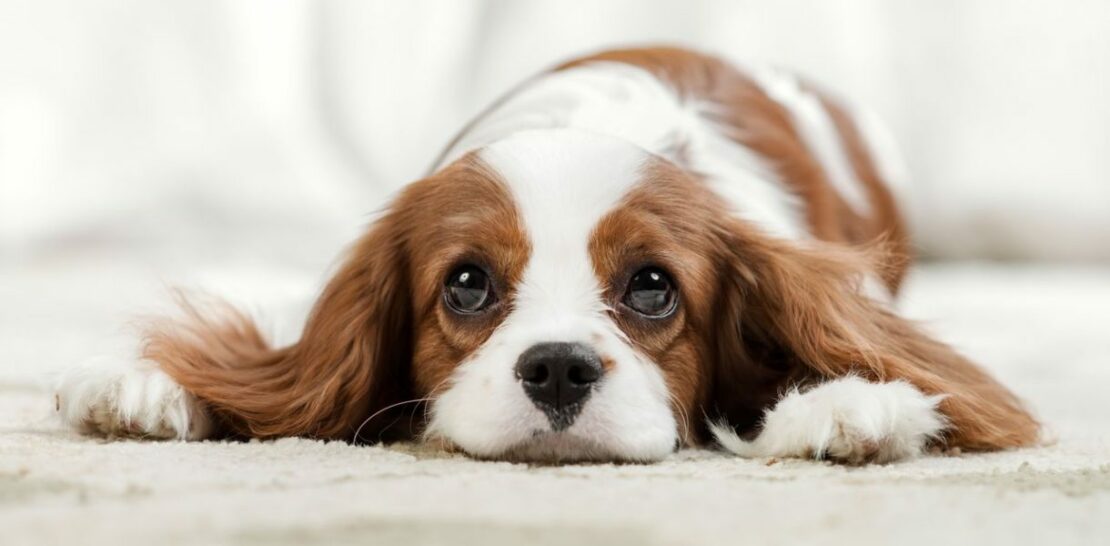Delve into the enchanting universe of the Cavalier King Charles Spaniel, a breed whose regal charm and affable demeanor has captured the hearts of dog enthusiasts across the globe.
This comprehensive exploration of the Cavalier King Charles tackles not only the breed’s fascinating history, temperament, and physical characteristics, but also its unique health concerns, training tips, and grooming essentials.
Join us as we embark on this journey to truly appreciate the undeniable allure of the Cavalier King Charles Spaniel.
A Royal Lineage: The Rich History of the Cavalier King Charles Spaniel
Tracing the origins of the Cavalier King Charles Spaniel reveals a captivating tale of nobility, companionship, and breed evolution.
From the moment one lays eyes on a Cavalier King Charles Spaniel, it is evident that they are in the presence of a breed steeped in aristocratic history. Indeed, the spaniel’s lineage can be traced back to the 16th century, when its ancestors were the favored companions of European royalty. King Charles I and King Charles II of England were particularly enamored by these small spaniels, and it was their patronage that ultimately led to the breed’s namesake.
Over the centuries, the breed saw numerous changes in its physical appearance, particularly as it was crossbred with other toy breeds such as the Pug and the Japanese Chin. This led to the emergence of the flat-faced, dome-skulled “King Charles Spaniel” or “English Toy Spaniel,” which stands in stark contrast to the longer-snouted, more traditional-looking “Cavalier King Charles Spaniel.”
It wasn’t until the 1920s that an American named Roswell Eldridge sought to revive the classic appearance of the breed. Through his efforts and the dedication of breed enthusiasts, the Cavalier King Charles Spaniel as we know it today was re-established and eventually recognized by the American Kennel Club in 1995.
Charming Companions: The Personality and Temperament of the Cavalier King Charles Spaniel
Affectionate, sociable, and eager to please, the Cavalier King Charles Spaniel boasts a temperament that is as endearing as its appearance.
- Affectionate and Loving: Known for their unwavering devotion to their owners, Cavaliers thrive on human companionship and are happiest when they can cuddle up with their family members. Their gentle and loving nature makes them exceptional therapy dogs and emotional support animals.
- Sociable and Friendly: Cavaliers are known for their amiable disposition, and they generally get along well with other dogs, animals, and children. Their innate friendliness makes them ideal candidates for dog parks and other social settings.
- Intelligent and Trainable: With their eager-to-please attitude and quick intelligence, Cavaliers can excel in obedience training and dog sports such as agility, flyball, and rally. Positive reinforcement methods are especially effective when training these sensitive and responsive dogs.
- Adaptable and Versatile: The Cavalier King Charles Spaniel is highly adaptable to a variety of living situations, making them suitable for both city and country dwellers alike. Whether residing in a cozy apartment or a spacious estate, the Cavalier will exude contentment as long as they are surrounded by their beloved family members.
Exquisite Exteriors: The Physical Characteristics and Standard of the Cavalier King Charles Spaniel
The Cavalier King Charles Spaniel’s elegant appearance is characterized by its well-proportioned body, expressive eyes, and lush, silky coat.
- Size and Proportion: A small yet sturdy breed, Cavaliers typically weigh between 13 and 18 pounds, with males standing at 12 to 13 inches at the shoulder and females at 11 to 12 inches. Their bodies are slightly longer than they are tall, with a level topline and a graceful, flowing gait.
- Head and Expression: The hallmark of the Cavalier is its sweet, gentle expression, which is accentuated by large, round, dark brown eyes and a slightly tapered muzzle. A shallow stop and moderately high-set ears further contribute to the breed’s distinctive countenance.
- Coat and Colors: Cavaliers possess a luxuriant, silky coat that can be either straight or slightly wavy. Feathering is present on the ears, chest, legs, and tail, adding to the breed’s overall elegance. Four recognized coat colors exist: Blenheim (rich chestnut markings on a pearly white background), Tricolor (black and white with tan markings), Ruby (solid rich red), and Black and Tan (black with tan markings).
- Movement and Gait: The Cavalier King Charles Spaniel exhibits a smooth, effortless gait, with good reach in the front and strong drive from the hindquarters. Their movement should display an air of grace and elegance, befitting their royal heritage.
Health and Happiness: Caring for Your Cavalier King Charles Spaniel
Ensuring the well-being of a Cavalier King Charles Spaniel requires a preventative approach to health concerns, regular grooming, and mental and physical stimulation.
Health Concerns: As with any breed, Cavaliers are predisposed to certain health issues. Two of the most prevalent concerns among Cavaliers are Mitral Valve Disease (MVD), a degenerative heart condition, and Syringomyelia (SM), a neurological disorder. Regular veterinary check-ups and early detection are crucial in managing these conditions. Other potential health issues include hip dysplasia, patellar luxation, and eye disorders such as cataracts and retinal dysplasia. Responsible breeding practices can help minimize the risk of these conditions.
Grooming Essentials: To maintain the Cavalier’s luxurious coat, regular brushing is necessary to prevent matting and tangles. Attention should be given to the feathering on the ears, legs, and tail, as these areas are more prone to knots. Bathing can be done as needed, but over-bathing should be avoided to prevent skin irritation. Additionally, regular dental care, ear cleaning, and nail trimming are essential components of a Cavalier’s grooming routine.
Exercise and Enrichment: Although not as energetic as some breeds, Cavaliers still require daily exercise to maintain their physical and mental well-being. A brisk walk, playtime in the backyard, or a rousing game of fetch can help keep a Cavalier physically fit and mentally stimulated. Enrichment activities such as puzzle toys, scent work, and trick training can also provide valuable mental stimulation for these intelligent dogs.
With their captivating beauty, affectionate nature, and regal bearing, it is no wonder that the Cavalier King Charles Spaniel has captured the hearts of dog lovers worldwide. By understanding and appreciating the breed’s unique history, temperament, physical characteristics, and care requirements, one can truly develop a deep and lasting bond with these charming and elegant companions.




